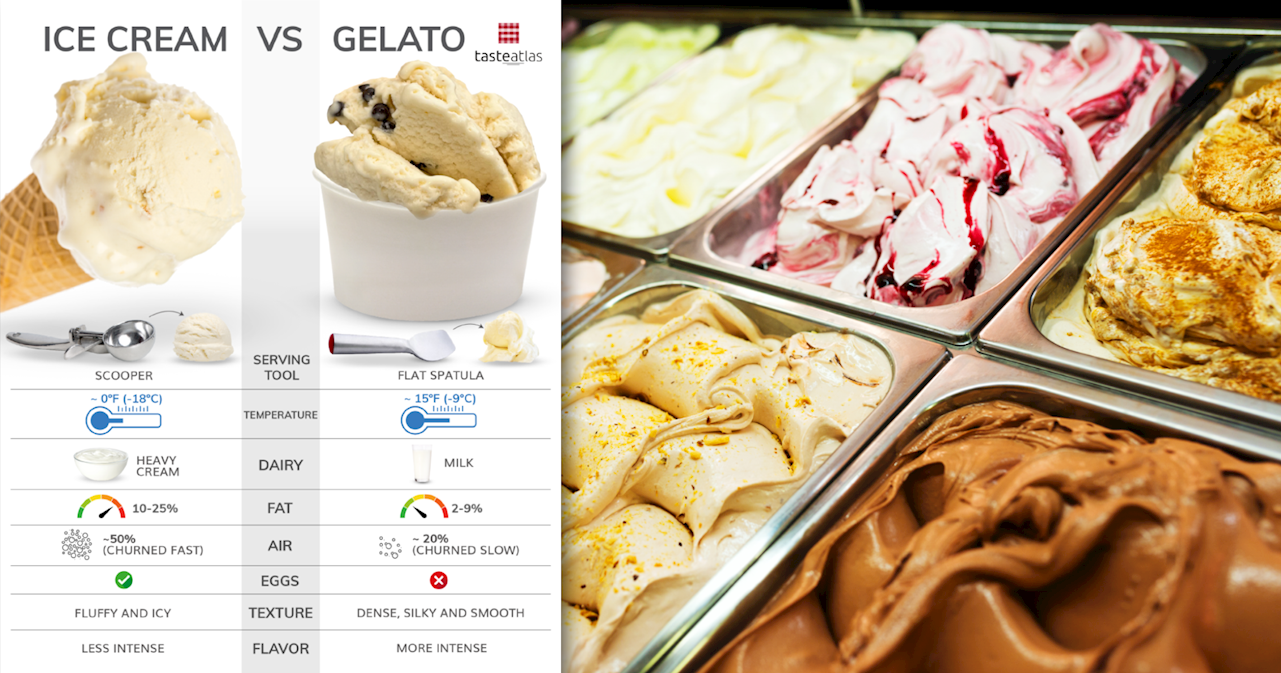On the surface level, ice cream and gelato are quite similar: they are sweet (well, most of them), cold desserts that do not require baking. Both are made with similar ingredients, but that's basically where similarities end.
 Different flavors of gelato Credits: Shutterstock
Different flavors of gelato Credits: Shutterstock
So, while it may be difficult to tell them apart from a distance, the two frozen treats have significant differences when it comes to the proportions of ingredients and texture. Also, the history, the manufacturing process, and their unique qualities are poles apart. And for those who count calories - you may be interested to know that one has fewer than the other.
The history of ice cream and gelato: What came first?
The simple answer is gelato! The modern gelato has roots in Italy, dating back to the 16th century, while on the other side of the ocean, the fortunate few were introduced to modern ice cream some two centuries later.
 Italian gelato Credits: Shutterstock
Italian gelato Credits: Shutterstock
However, both ice cream and gelato have a common frozen ancestor that, as some historians claim, goes back as far as the second century B.C, when Asian cultures discovered they could consume crushed ice and flavorings. Still, we do not have the date of origin or the inventor that can be indisputably credited with its discovery.
The history of ice creams has another important date worth mentioning. At around 500 B.C. in the Persian Empire, they started mixing ice with fruits and grape juice to produce expensive summertime treats, mostly enjoyed by Emperors and nobility.
Next came the Arabs, who redefined the world of frozen treats by introducing milk and sugar. By the 10th century, the entire Arab world was using ice cream made from milk, cream, flavoring rosewater, dried fruits, and almonds.
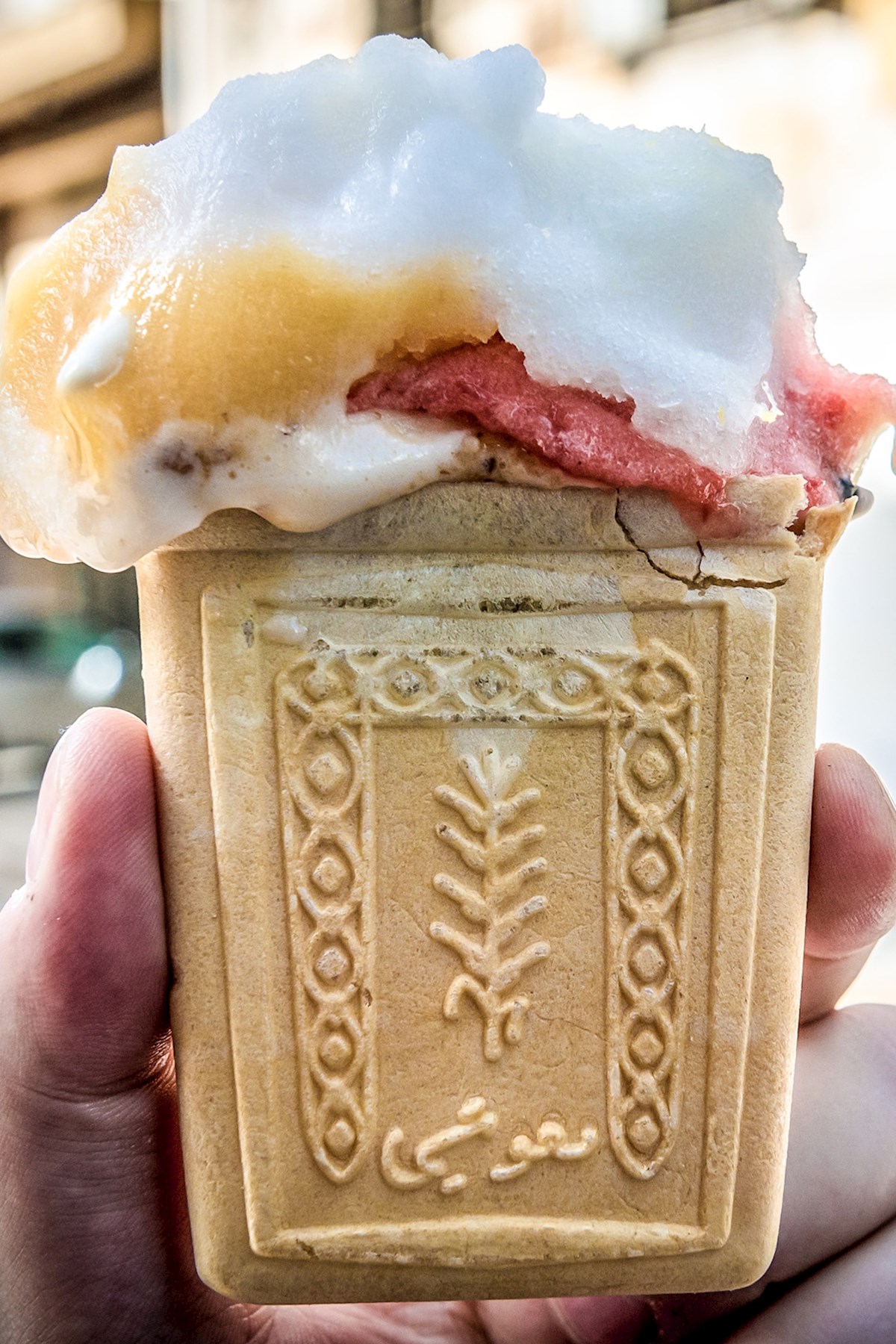 Traditional Arab ice cream Credits: Shutterstock
Traditional Arab ice cream Credits: Shutterstock
Now, fast forward a few centuries
According to legend, Marco Polo, the world's most famous traveler of all time, returned to Italy, carrying with him the secrets of mysterious culture and knowledge of the Eastern world. One of these secrets was the recipe for ice cream, made not from shaved ice but primarily with milk. This knowledge helped kick off the Italian ice cream industry, and finally, in the 16th century, the gelato that we all know and love today was born.
Some claim it was developed by the famous artist and architect Bernardo Buontalenti who was also the first to think of an efficient way of storing ice cream, which was, for centuries, the biggest obstacle to the large-scale production of ice cream.
Still, others credit the alchemist and astrologer Cosimo Ruggeri, who once participated in a competition called "the most unusual dish you have ever seen," organized by Queen Catherine de Medici, and won with his "frozen treat." Supposedly, the treat in question was the fior de latte gelato.
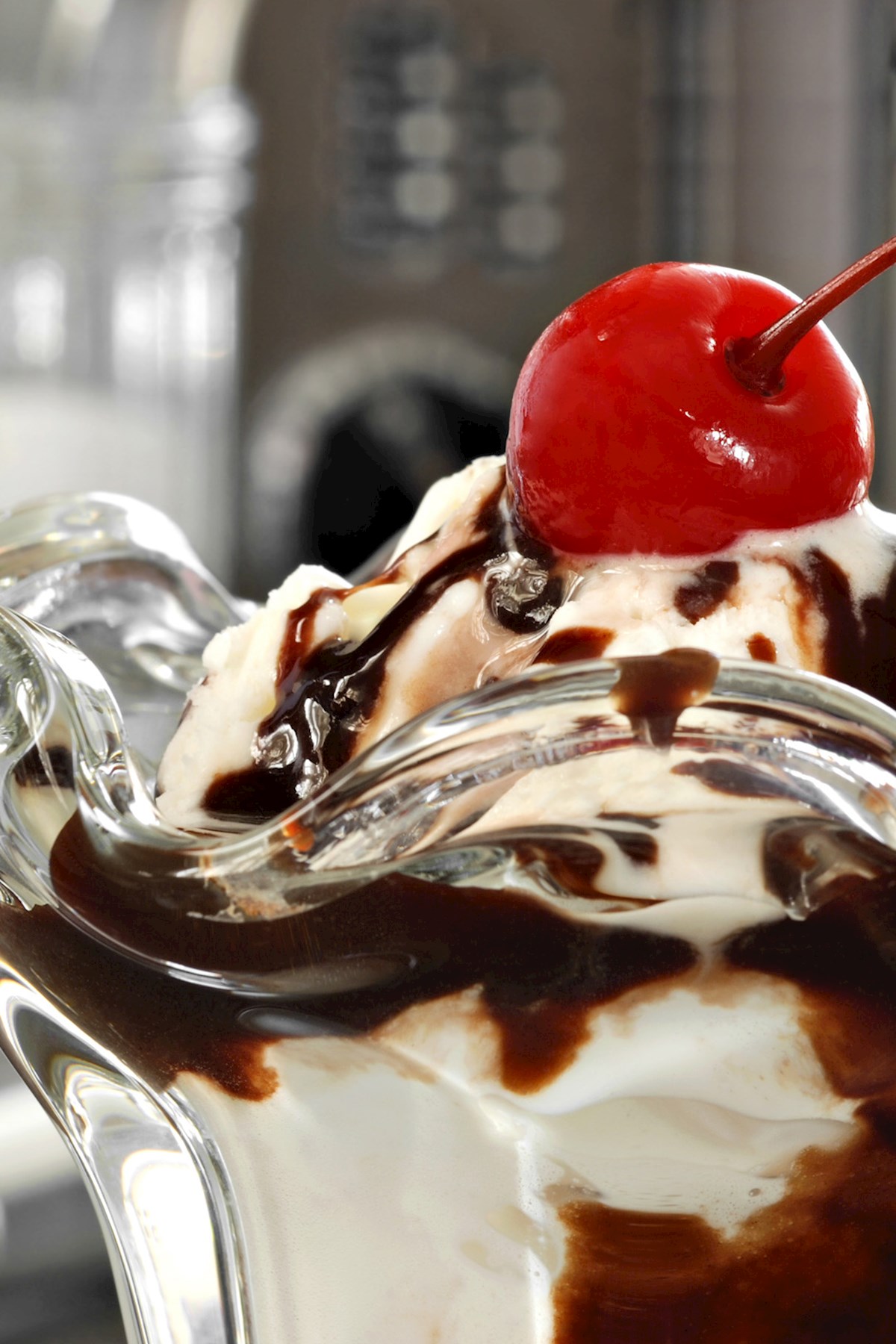 Sundae, modern American ice cream Credits: Shutterstock
Sundae, modern American ice cream Credits: Shutterstock
Gelato was brought to the United States around 1770 by Italian immigrants. When Italian native Giovanni Bosio opened gelateria in New York City, people fell in love with Italian delicacy. Eventually, Americans began making changes to the original recipe and started producing what was soon to be known as ice cream. Technological innovations such as mechanical refrigeration made it possible to produce this cold desert in large quantities, and ice cream soon overshadowed gelato in the United States.
Ok, but how is gelato different from ice cream?
Ice cream and gelato are both frozen dairy desserts made of milk, cream, sugar, and (typically) egg yolks.
The main difference is that gelato has a lower fat percentage and is made by a slow mixing process. Because of this, gelato is lower in calories and has less air, making for a denser texture and more concentrated flavor when compared to ice cream.
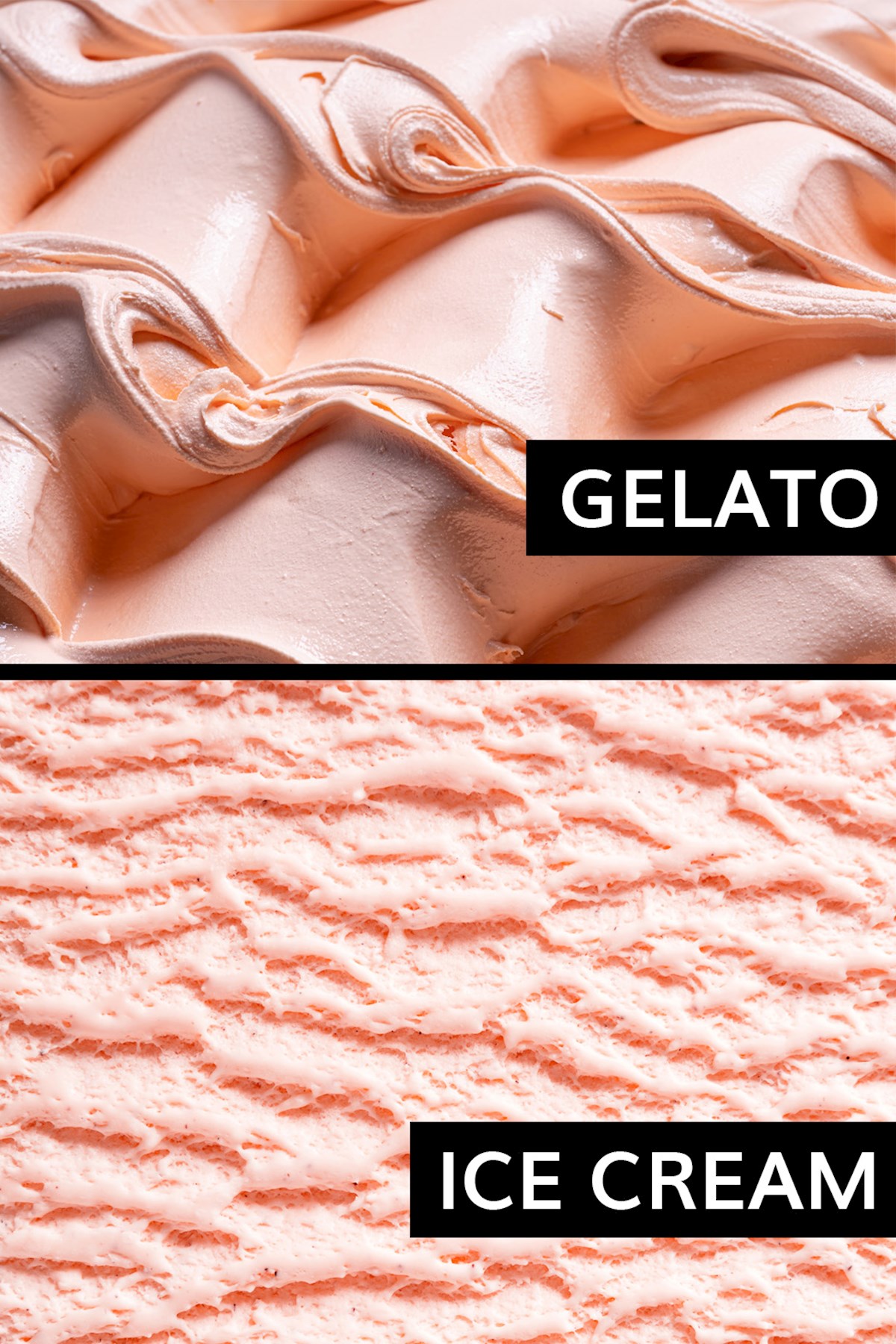 Texture of gelato and ice cream Credits: Shutterstock
Texture of gelato and ice cream Credits: Shutterstock
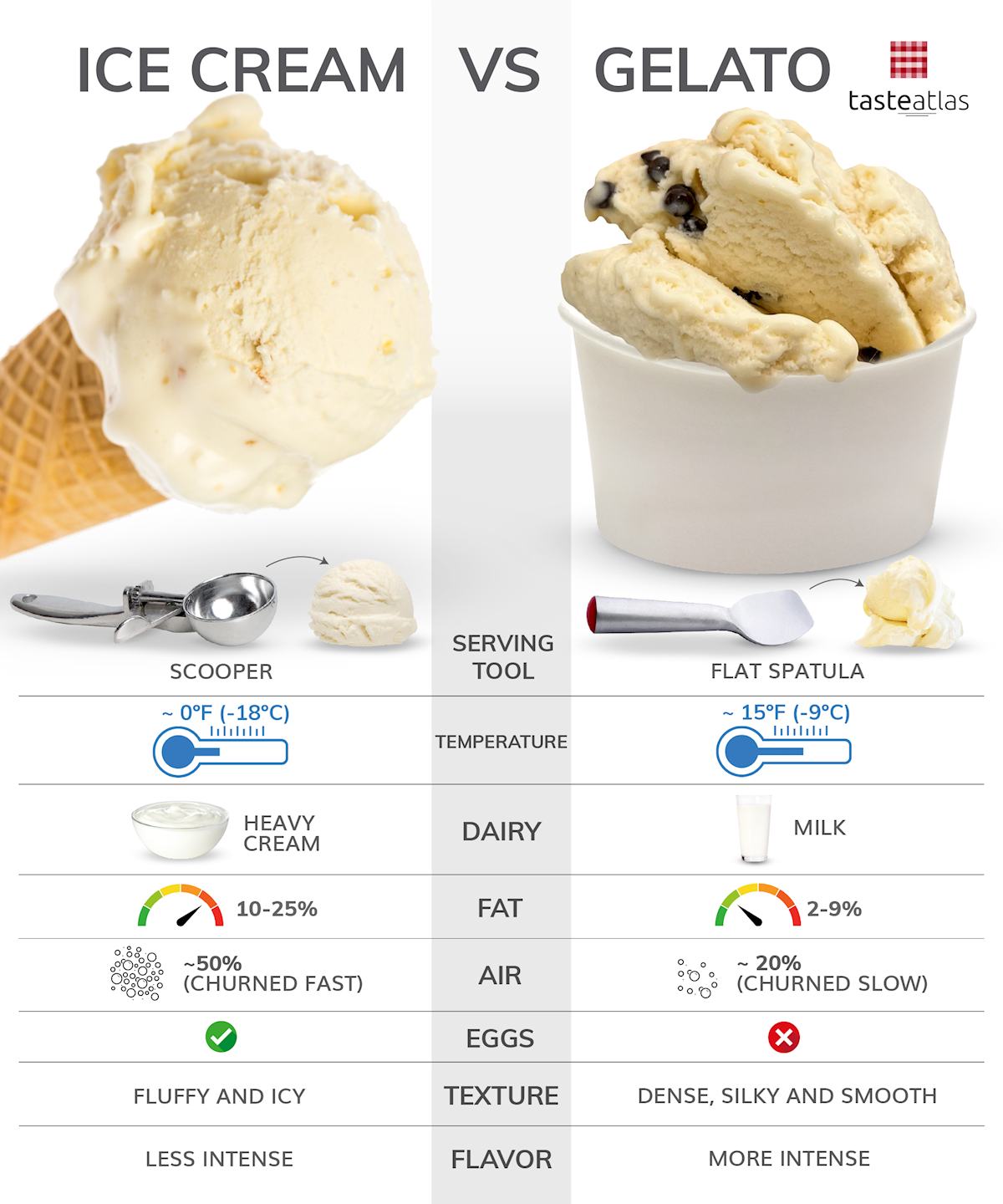 TasteAtlas
TasteAtlas
Due to its thickness, gelato is usually stored at a lower temperature than traditional ice cream to ensure the perfect level of creaminess and a silky finish, the essential characteristics of every gelato. That's why gelato has a silkier texture, more comparable to soft serve than to regular ice cream.
Also, many American ice creams are sweetened artificially, while the natural sugar in gelato creates tiny ice crystals that aid in creating a smooth and creamy texture.
There are also differences in how they're served. While the ice cream is scooped onto a cone, gelato is spread onto cones with a flat spatula.
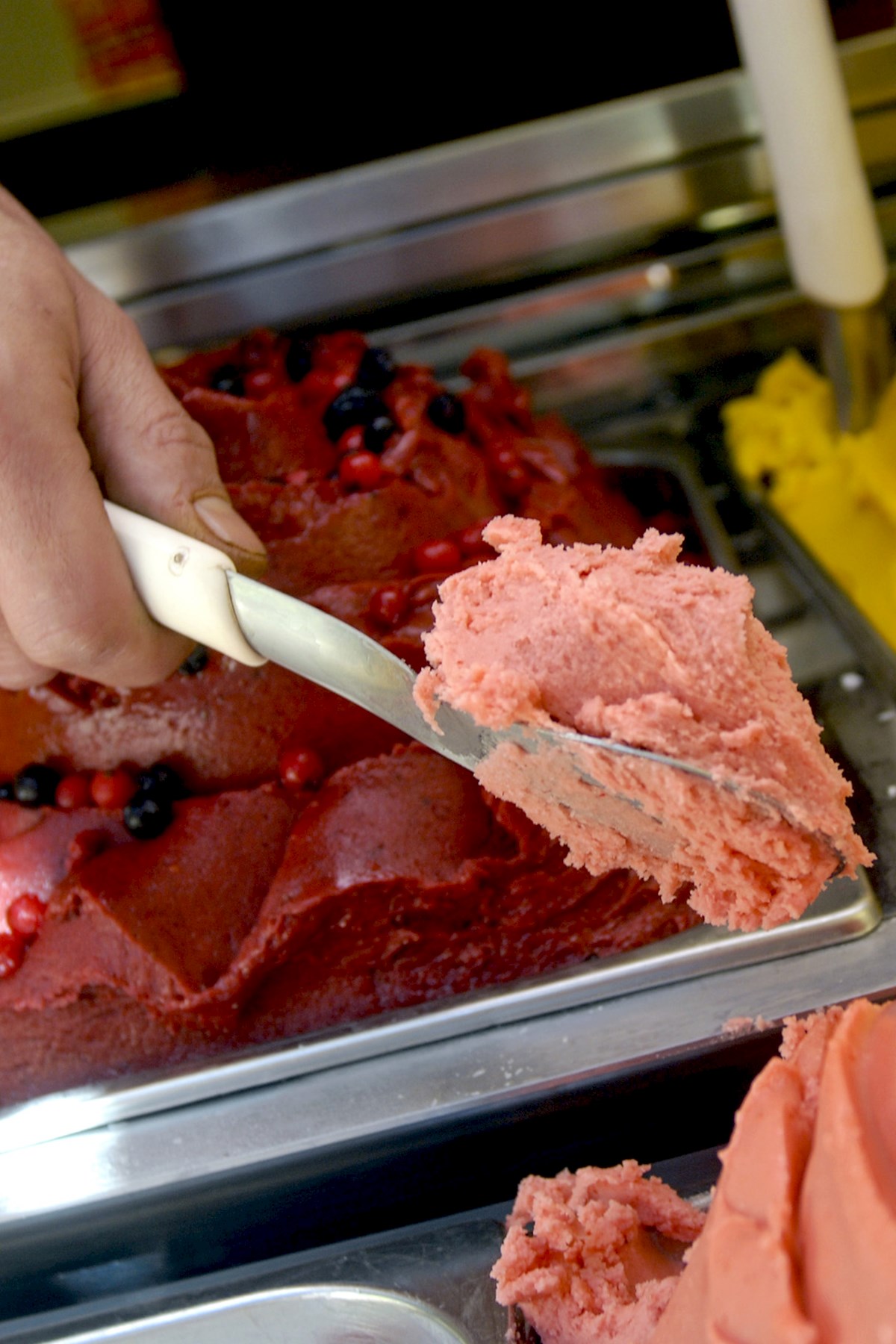 Serving gelato with spatula Credits: Shutterstock
Serving gelato with spatula Credits: Shutterstock
And if you are wondering what are the most popular ice creams in the world and where you can try them - click here to find out.
Check out the ice creams of the world!
